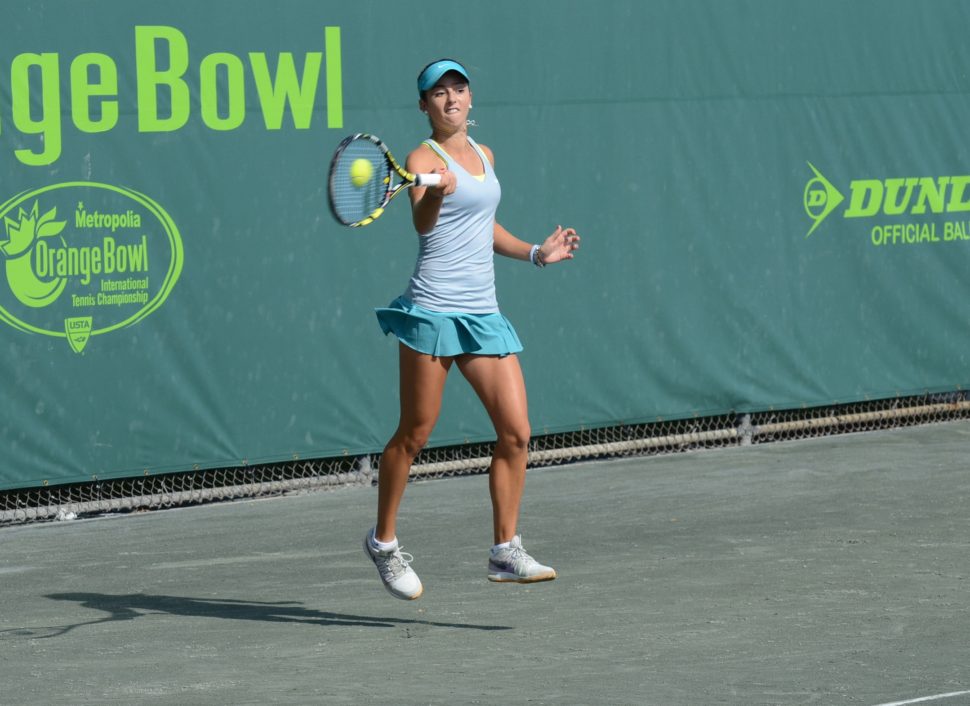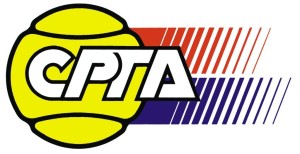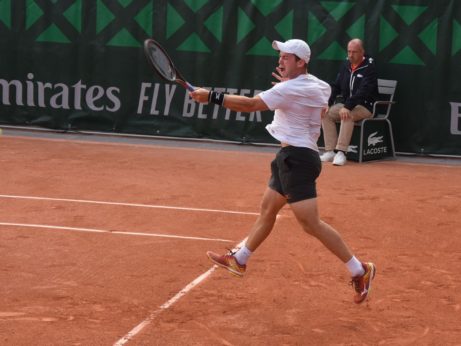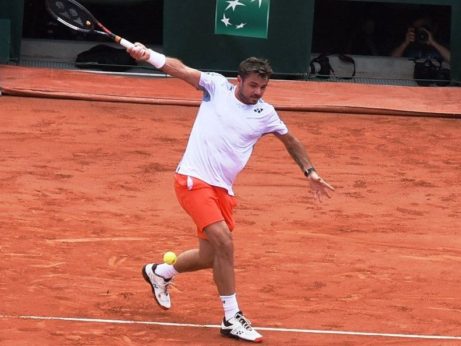Catherine Bellis – Forehand 3.0 with potential

Young Californian prodigy Catherine “Cici” Bellis (*99 / USA) has a great feeling for the game. She was having a well-organized almost entirely private tennis development program going for her since a very early age and thus she has learned very early how to understand the game, the court and how to win. In the year 2014, at the age of 15, Catherine became #1 on the Junior ITF ranking and has also entered the WTA top 300 already. Bellis has reached her Junior #1 ranking without winning any of the major junior singles titles, she captured just the 2014 Orange Bowl U18 doubles title with Czech Marketa Vondrousova (in the meantime, they are both in the WTA top 100). Her biggest singles trophies in juniors have been just the Trofeo Bonfiglio (ITA), Easter Bowl (USA) and Coffee Bowl (COL). In 2016, at the age of 17 years, Catherine entered the WTA top 100 and she closed the 2017 season even in the top 50.
Excellent feeling for the game with very good anticipation skills, solid footwork & positioning in the court as well as a quite serious mental toughness capacity, this all belongs to Catherine’s main strengths. From the technical point of view, her service was for quite long rather a weakness (got better in between), but both of her groundstrokes and returns were rather pretty solid. Catherine’s forehand then has the potential to become a serious weapon; she has already mastered some of the most significant elements of the Forehand 3.0 Code, but some small details of it (mainly around the timing/spacing and the form of the pronation) are still in parts missing and their absence is, therefore, limiting the potential of this stroke. Her forehand quality is based also on the fact, that she is mostly able to keep the body rotation axis inside of her body around the spine, which is then much more efficient in comparison to the body rotation axis being outside of the body (around the outside leg).
Below, I am comparing Catherine’s forehand during her 3rd round match at the 2014 Orange Bowl (against Shiskina / USA – the first tie-break set was very tight there) and her forehand in a practice set against Kayla Day (USA) during the 2017 French Open. At Catherine’s example is then also quite well possible to explain the certain mystery of the stances as the terms open, semi-open, direct, closed can be sometimes quite misleading. Based on the incoming ball, the feet position is rather situational, the main question is much rather, where do the loading (coiling) and unloading (uncoiling) originate from, which leg gives the starting impulse and generates most of the stroke driving power from the ground reaction force (GRF). When the push-off goes over the outside leg, we should talk about an open stance stroke variety; in the case of the push-off from the inside leg, we would be talking about a direct stance and when the push-off and body (hip and shoulder) rotation are hardly possible, it would be a closed stance. Based on this, the “capacity of the stance” (and the space for the stroke) play also a big role in the relation to the (ideal) body rotation, which delivers the all-important centrifugal force (uncoiling leading to body energy unloading) – one of the main factors in the modern body energy driven tennis aka TENNIS 3.0. The amount and form of the body rotation, as well as the position of its axis, then relate to the mechanical efficiency of the stroke, which besides the overall stroke quality to big degree influences also the probability of the injuries.
The photos below show that Catherine was since her junior years well-focused on the use of the body energy in her forehand strokes. The centrifugal force from the body rotation was the main energy source of most of Catherine’s forehands back then already. The spacing and the form of the pronation then seem to have been a bit of a challenge back then as they are a certain remaining challenge in the meantime still…, despite clear improvements. The rather quite extreme semi-western grip is certainly a factor too.

Catherine Bellis (*99 / USA) – Forehand 3.0 in a match – 1 of 3 – short after the impact – wrist is locked, perfect eye control, pushing off the outside (right) leg initiated hip and shoulder rotation (uncoiling) and its centrifugal force is leading to a solid body energy unloading onto the racket and against the intended target – 2014 Orange Bowl – Plantation, FL / USA – December 2014

Catherine Bellis (*99 / USA) – Forehand 3.0 in a match – 2 of 3 – end of follow through 1 – elbow is still pointing more or less against the target, torso while in the air is turning around its axis from the outside to the inside, the axis of the rotation remains inside of the body around the spine – 2014 Orange Bowl – Plantation, FL / USA – December 2014

Catherine Bellis (*99 / USA) – Forehand 3.0 in a match – 3 of 3 – follow through 2 – relaxation – landing in a deep split-step, good eye focus at the action of the opponent, the long racket path behind the body is rather a bit negative from the energy point of view and also too time consuming – 2014 Orange Bowl – Plantation, FL / USA – December 2014

Catherine Bellis (*99 / USA) – Forehand in a match – 1 of 2 – impact – good use of the GRF and solid body rotation – the position of the hitting shoulder ahead of the non-dominant shoulder during the impact is very significant, excellent eye control of the ball, the narrower stance shows that the space for the stroke was rather limited – 2014 Orange Bowl – Plantation, FL / USA – December 2014

Catherine Bellis (*99 / USA) – Forehand in a match – 2 of 2 – beginning of follow through 2 = relaxation, which started too early here – this signals limited space for the ideal stroke path leading to a limited targeted pronation causing a body energy release (unloading) limited in both the amount and the control – 2014 Orange Bowl – Plantation, FL / USA – December 2014

Catherine Bellis (*99 / USA) – Forehand 2.0 in a match – 1 of 2 – end of follow through 1 – the elbow stays bent and close to the body – practically none body energy unloading upon the racket – typical forehand 2.0 – 2014 Orange Bowl – Plantation, FL / USA – December 2014

Catherine Bellis (*99 / USA) – Forehand 2.0 in a match – 2 of 2 – follow through 2 = relaxation/landing – the pronation in this portion of the stroke has no effect – by the way, Catherine lost this point – 2014 Orange Bowl – Plantation, FL / USA – December 2014

Catherine Bellis (*99 / USA) – Forehand 2.0 in a match – 1 of 1 – end of follow through 1 – limited space kept the elbow bent and close to the body, the body energy unloading against the target going over the targeted pronation is missing here – as Catherine has, in general, a solid footwork and a good anticipation, such a stoke has to do with the mental image of the action – 2014 Orange Bowl – Plantation, FL / USA – December 2014

Catherine Bellis (*99 / USA) – Forehand 3.0 in a practice match – 1 of 4 – backswing/take-back creating clearly visible pretension (coiling) in the torso and solid lower body loading on a wide base – right (outside) leg will initiate the push-off, perfect pointing with the non-dominant (left) hand at the ball plays also a big role – 2017 French Open – Paris – May 2017

Catherine Bellis (*99 / USA) – Forehand 3.0 in a practice match – 2 of 4 – push-off / forwards swing – right leg action started the body rotation (uncoiling), which has its axis inside of the body (close to the spine) and which delivers the centrifugal force throwing the racket against the ball and target – 2017 French Open – Paris – May 2017

Catherine Bellis (*99 / USA) – Forehand 3.0 in a practice match – 3 of 4 – end of follow through 1 aka targeted pronation – elbow is still pointing more or less against the target, perfect head/eye as well as body control – 2017 French Open – Paris – May 2017

Catherine Bellis (*99 / USA) – Forehand 3.0 in a practice match – 4 of 4 – follow through 2 aka relaxation/landing – the racket path behind the body is still rather too long – 2017 French Open – Paris – May 2017

Catherine Bellis (*99 / USA) – Forehand 3.0 in a practice match – 1 of 5 – take-back – initiated by the backward step with the right (outside) leg, which was needed to create sufficient space and body pretension (through body coiling) in this running around situation, great eye focus and perfect cooperation of the non-dominant (left) hand/arm – 2017 French Open – Paris – May 2017

Catherine Bellis (*99 / USA) – Forehand 3.0 in a practice match – 2 of 5 – push-off with the outside (right) leg started the body rotation (uncoiling) leading to the forward swing of the racket, perfect eye control – as the push-off goes over the outside (right) leg, this stroke would still belong the the “open stance” stroke category – 2017 French Open – Paris – May 2017

Catherine Bellis (*99 / USA) – Forehand 3.0 in a practice match – 3 of 5 – end of follow through 1 – elbow is still pointing against the target – the pronation is partly limited here, mainly due to suboptimal space created for this stroke, despite that Cathrine was able to rotate (uncoil) her body and keep the axis of the rotation inside of the body – 2017 French Open – Paris – May 2017

Catherine Bellis (*99 / USA) – Forehand 3.0 in a practice match – 4 of 5 – follow through 2 = relaxation / landing – good eye control of the opponent’s action – 2017 French Open – Paris – May 2017

Catherine Bellis (*99 / USA) – Forehand 3.0 in a practice match – 5 of 5 – end in a deep split-step – racket stays back rather a bit too long – 2017 French Open – Paris – May 2017
This article covers certain aspects of Catherine Bellis’ forehand and forehand in general only! Further photos, more details about her forehand and other strokes as well as about the strokes of other players are available upon request at drmgb11(at)gmail.com. Some significant details of this kind, necessary for a top tennis performance as well as for a sustainable tennis training/development in general, are being discussed also in the seminar “TENNIS 3.0 – Future of the Game”, which is available worldwide upon request – www.tennis30.com / www.tennis30.cz
Photos (December 2014 & May 2017) & text (December 2017) copyright by Dr. Martin G. Baroch. Any further publication of either any of the photos and/or texts with the explicit written permission from the author/copyright owner only!!



